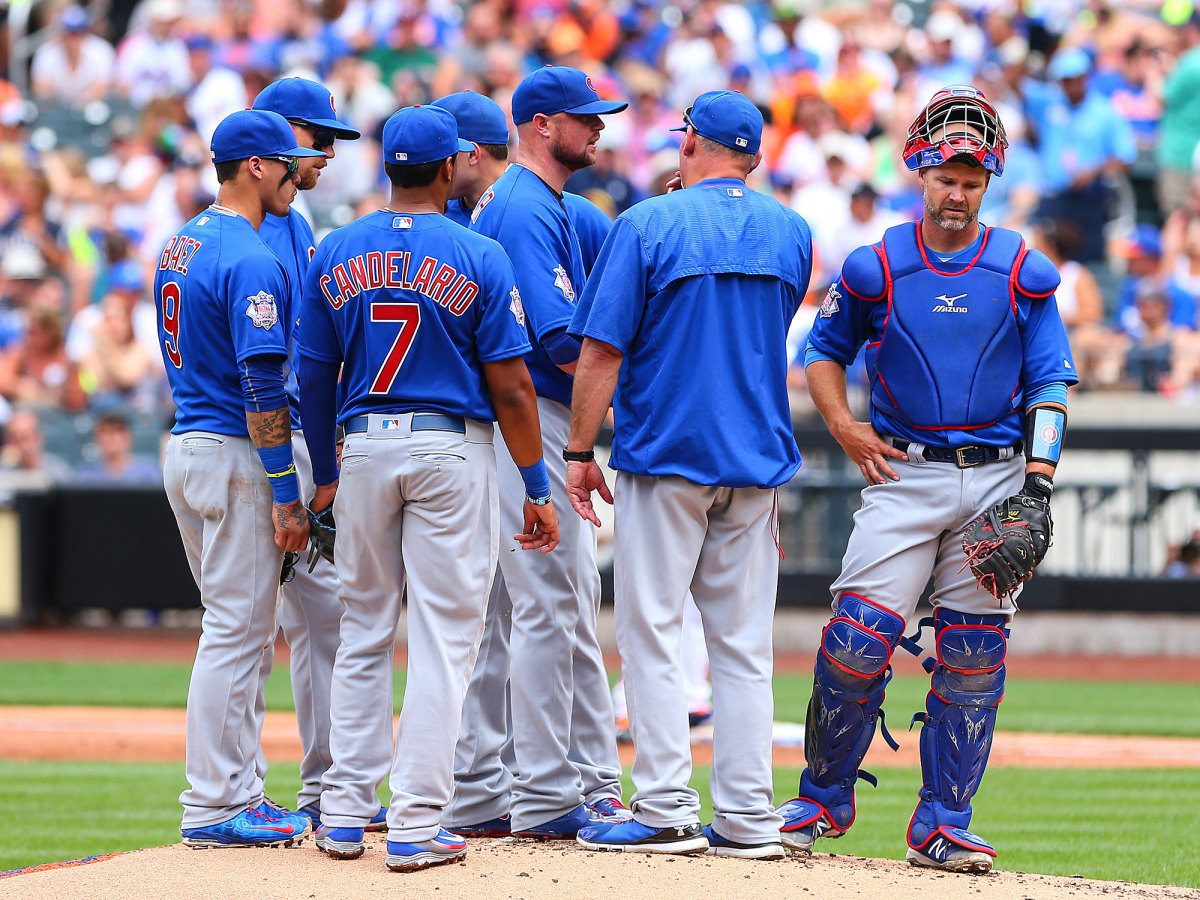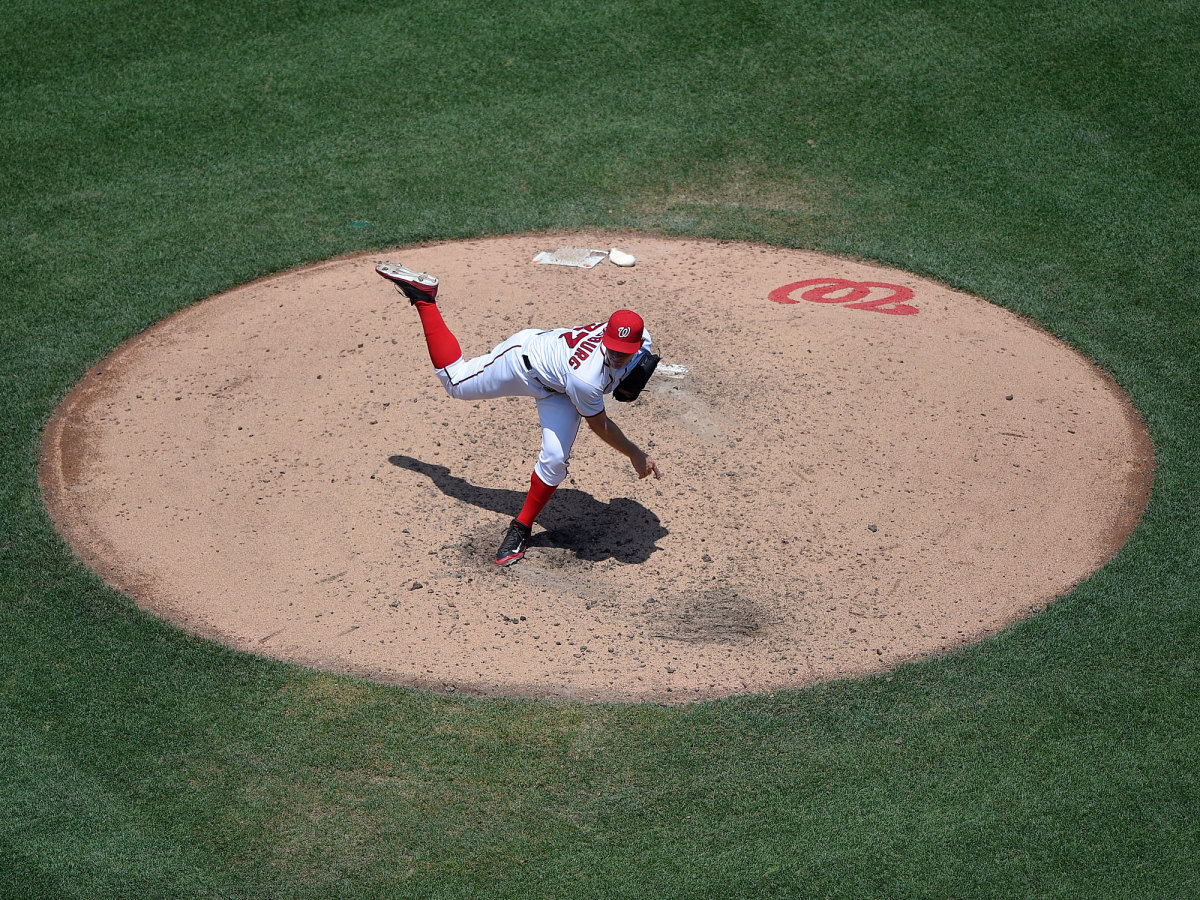Improving baseball, Part 2: Bonus batters and six more solutions

Start with this: As a business, baseball is in good shape. Attendance is stable, averaging more than 30,000 fans per game in a season with 2,430 games. Primetime games for 22 of the 30 teams are the No. 1 ranked cable program on those nights in those markets. The MLB At Bat app is the envy of sports businesses for its popularity and ease of use.
The challenges for baseball are not about “saving” the game but about making it better, especially in increasing its national cultural relevance and being the gateway sport for children, who are the next generation of paying customers. So we’re talking not about a tear-down, but modernizing a beautifully crafted old house due for updating.
Major League Baseball is well aware of these challenges. The current negotiations toward a new Collective Bargaining Agreement to replace the one that expires on Dec. 1 will have a large say in where baseball is headed. MLB is also studying how quickly the game has changed in this Information Age, and examining the benefits and risks as data swings the game more toward run prevention than run production.
“Time of game” and “pace of game” are misnomers toward making baseball a stronger option in a world of growing entertainment options. We have become a nation that demands near constant amusement, much of it in a passive state via viewing screens. When baseball commissioned a study to measure youth participation in sports, for example, it was alarmed to find that in recent years, participation in every sport was down. Only one response showed a gain among the respondents: playing nothing at all. Scary.
As the need grows to swipe and click to the next source of amusement, “pace of game” isn’t important; “pace of action” is the barometer. Keeping players and the baseball in motion are more important than slicing six minutes off the time of game.
An era of modernization is upon us under commissioner Rob Manfred, who has an open mind about structural changes to the game beyond its immutable, sacred basics (four balls, three strikes, three outs, nine innings). Yesterday, I explained why baseball is facing a frightening future and why a shorter season might be an important solution. Today, I am proposing changes worth considering to the on-field product, all of which aim at improving the pace of action. Tomorrow, I will propose a handful of off-field changes.

1. Six timeouts per nine innings, two timeouts per every three extra innings
Baseball has a stoppage problem. It’s the only sport in which each team has an unlimited number of timeouts, and you can call a timeout as many times as you like whether you’re on offense or defense for any reason whatsoever. The only limitation is on the manager and pitching coach, who are allowed one visit to the mound per inning with no penalty.
Players and coaches now abuse this privilege of unlimited talk time. Catchers will visit the mound multiple times within the same at-bat to talk about what pitch to throw next or to change the signs with a runner on base. Pitching coaches routinely visit the mound to hold a pitcher's hand in times of trouble, or to allow a relief pitcher more time to warm up.
• Verducci: The frightening future of baseball, and why shorter season would help
My goodness, if you watch any baseball game, you have to wonder how tennis players ever make it through the finals of a Grand Slam tournament without a visit from their coach. Uh, it’s called skill, and relying on all the prep work before the game to make adjustments.
Stopping the game cold has become a badge of honor. Catchers are considered to have the tactical skills of a five-star military general by constantly trudging out to the mound to “guide” a pitcher through an inning. Pitching coaches are lauded for “a good visit” while mumbling what we think is the mystical wisdom of a yogi, when most of them are getting TV time for glorified versions of what Art Fowler, the pitching coach and drinking buddy of longtime manager Billy Martin, used to tell his pitchers upon a visit: “I don’t know what the hell you’re doing, but you better stop it because Billy is getting real ticked.”
For almost one hundred years baseball wasn’t played with this splitting-the-atom kind of circumspection. Stopping the game has to stop. Pitching coaches, managers, catchers, infielders ... the whole lot of you get six timeouts to use for nine innings. Divide them any way you want, but you get only six.
2. Relief pitchers must face a minimum of two batters
The current rule is one batter, and specialized (and bigger) bullpens have made a mockery of it. From 1998 (the first year with 30 teams) to 2015, the number of one-batter relief appearances increased 43%.
Just imagine the concept of a relief pitcher trusted to get out both a righthanded and lefthanded hitter! Crazy, I know.
On May 25, interim Braves manager Brian Snitker used nine pitchers in a span of 16 batters; four of those nine pitchers faced only one batter. Time of game for the riveting, 13-inning game won by the Brewers, 3–2: four hours, 51 minutes.
Ted Williams hit his 521 homers off 202 pitchers. David Ortiz has hit 527 homers off 352 pitchers. Yes, interleague play accounts for more pitchers. But here’s the real difference between them: Williams took 603 plate appearances against lefties after the sixth inning. Ortiz has taken 1,048 plate appearances against lefties after the sixth inning—a 74% increase from how The Kid was treated.
Pitching changes stop the game and depress offense, neither of which is good for the future of baseball as an entertainment option.
• Subscribe to get the best of Sports Illustrated delivered right to your inbox
3. A 154-game season in 183 days
As I detailed on Wednesday, the players need more off days. Give them two Mondays off in April, two in May, two in June, one in July and one in August—Monday being the least-attended game of the week.
I would make an exception on these Dark Mondays: One game only will be scheduled on those nights to create a true “national” feel for the game. Regional games typically out-rate national broadcasts when they compete. The Big Monday Game creates a showcase environment.
And yes, though they are arguing against it, the players will have to take a pay cut for playing fewer games, even if it’s not the full prorated 4.9%.
4. No expanded rosters—that includes September, too
I’ve already explained previously why giving managers more relief pitchers—even with a floating three-man taxi squad—is horrible for baseball. Let’s also get rid of the travesty of expanded rosters in September.
Here’s how it should work in the season's final month: You can call up as many players on your 40-man roster as you wish. All will be given major league service time. But before every series (not every game), the club will designate 25 players as active. In the event of an injury during the series, just as in the postseason, a player can be replaced, but he then becomes ineligible for the next series.
There is no good reason why teams play 25-against-25 for five months, and suddenly when pennant races are decided, we get an entirely different version of baseball.

5. Lower the mound two inches.
The height of the mound has remained at 10 inches since 1969, when it was lowered from 15 inches. Offense spiked in 1969, as MLB wanted, but the increase in run scoring also was due to a redefinition of the strike zone.
When pitchers get hurt, their normal recovery begins with throwing on flat ground, graduating to the bottom slope of the mound and eventually to the top of the mound. That pattern seems to be a recognition by the baseball industry that a less severe slope may keep pitchers healthier. That would be a fortunate byproduct to the main goal: getting the ball in play more. Reducing the downward angle of pitches should encourage more contact—more action.
The 1969 adjustment represented a whopping 50% reduction in mound height. This would be a more modest 20% correction.
• Five trade deadline deals that need to happen now
6. A replay clock
We now have a 30-second clock on mound visits. Now put a clock on managers to issue a replay challenge (30 seconds from the end of the play) and a clock on replay officials (90 seconds; if you can’t determine an overrule within that time, it’s too hair-splitting of an exercise and the call stands and we get back to baseball).
7. The Bonus Batter
O.K., it's time to get really creative.
Cubs reliever Aroldis Chapman and Nationals outfielder Bryce Harper are once again National League foes, having previously spent four years in the NL together (2012 to '15). Who wouldn’t want to see the hardest-throwing pitcher in baseball against one of the hardest-swinging hitters in baseball? Do you know how many times they faced each other in those four years?
Four. That’s it. That’s all the randomness of a baseball batting order would allow.
The endgame of sport should come down to the best players. Tom Brady runs the two-minute drill. Lebron James gets the ball out of a timeout for the last shot. What if you knew the best player on your team would always get the key at-bat in a close game? Wouldn’t you be more apt to watch at home or stay in your seat in the park if you knew that Harper was going to face Chapman if the Cubs had a lead, or that Mike Trout would face Craig Kimbrel if the Red Sox were in front—no matter who was due up?
Here’s how it would work: Once a game a manager can pick any player—whether he’s due up or not, on base, or out of the game—to take an at-bat of his choosing. This is the Bonus Batter. Ortiz could be on second base with the bases loaded, down three runs in the ninth, and manager John Farrell can call him off the bases to take the turn of Ryan Hanigan. Or Ortiz could make an out, and then, as the Bonus Batter, take the next at-bat, too.
It’s a complete “free space” of an at-bat. The player who loses his turn is not replaced, and the hitter who took the at-bat goes back to his regular turn in the order after it’s over.
The keys here are: a) Getting the best players up in the biggest spots; b) Adding another level of strategy. Imagine all the second-guessing about when the manager should have used his one Bonus Batter; and c) Breathing some life—and maybe even some offense—into the dead ball baseball we are seeing in the late innings of today’s game, which I detailed on Wednesday.
